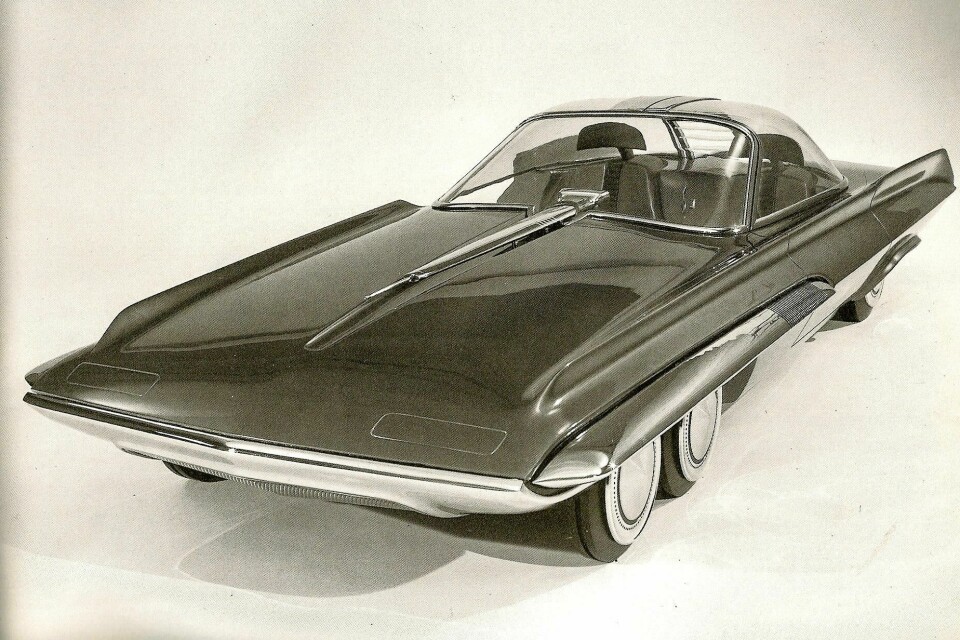
Concept Car of the Week: Ford Seattle-ite XXI (1962)
Ford’s vision for spaceage, nuclear-powered cross-country driving
The 1962 Seattle World’s fair lacked the size, scope and subsequent recognition of the New York World’s Fair held just two years later. However, it was an urban renewal project that changed the skyline of Seattle, thanks to the opening of the Space Needle, and also provided Ford with the opportunity to exhibit a new concept themed around space flight.

Called the Seattle-ite XXI, the long jet-like coupe was presented as a nuclear-powered two-seater cross-country turnpike cruiser.
Although promoted as a full-size car in publicity photographs, it was actually only ever shown as a 3/8-scale model, yet many ideas pioneered in the car have become a reality.
The name Seattle-ite was a portmanteau of Seattle, Satellite and Seattleite (a resident of Seattle). The XXI represented 21, the century to which the Fair looked forward.
The work of Tucker Torpedo designer Alex Tremulis, the Seattle-ite was designed for high-speed travel along the newly-developed interstate highway system.
Given the speeds that the car could theoretically cruise at, six wheels were employed, with two pairs up front that doubled as both driving and steering wheels, and one pair trailing behind.

Having two pairs of wheels up front led to some interesting proportions. Seen from the front and rear three-quarter views, the car doesn’t seem particularly extreme. However, from the side, the coupe looks almost cartoonishly long, with an enormous hood and rear deck – clearly the car would prove an inspiration for Lady Penelope’s six-wheel FAB1 in Thunderbirds later in the decade.

In addition to providing stability at speed, the forward portion of the car, including the four drive wheels, was designed to detach when in an urban area and replaced with a more compact and efficient city car module. Other modules were theoretically available, but none were shown at the Fair, each connected by a flexible attachment in the firewall.

The passenger cabin was a cockpit with a glass canopy. Entry was gained by intricate, two-stage doors, with the upper, glazed part rising gullwing-style, and the lower part pushed out on rods.

Once seated, one luxuriated in plush bucket seats that curved in a single piece from the passenger’s shoulder to their feet, offering enhanced comfort on long drives. The driver was also treated to a host of technology, including steering that worked with just a fingertip touch and a host of navigational aids. These included a primitive GPS, continuously updated weather conditions, and vehicle monitoring systems, all intended to serve to long distance driver.

The canopy over the passenger compartment was constructed of variable density glass that would allow diffuse light into the cabin, and aid climate control. Additional ventilation was provided by the louvre jalousie window behind, the driver and passenger.

Created at Ford’s advanced studio, the Seattle-Ite XXI would remain just a model. However, many ideas introduced with the car have made production in some form. Although never massively popular, the six-wheel configuration would be used on the Tyrrell P34 Formula 1 car and the Cadillac-powered Panther 6 of the 1970s.

The idea of an interchangeable nuclear fuel cell was a nonstarter, but the idea of swapping fuel cells, batteries and other powertrain elements reappears frequently. Similarly, the idea of different interchangeable modules on a single chassis – city car, family car, light duty pickup, etc. – has been explored on a number of concept cars over the years.

However, the proposed navigation systems, including GPS, road monitoring, weather updates and engine monitoring systems all are common in today’s cars. Even a version of the glass canopy has become common with the advent of the panoramic roof in the last few years. Autonomous cars may yet facilitate the use of lounge-like seating, too.

While the ideas pioneered in the Seattle-ite broke new ground, the concept’s design was a coda to the jet-age theatrics of the 1950s. Ford designers, as well as those of other manufacturers, were already looking beyond the tailfin, the glass canopy, and other rocket themes and embracing the fact that the car is a vehicle for exploring the wonders of the earth, not the heavens.





